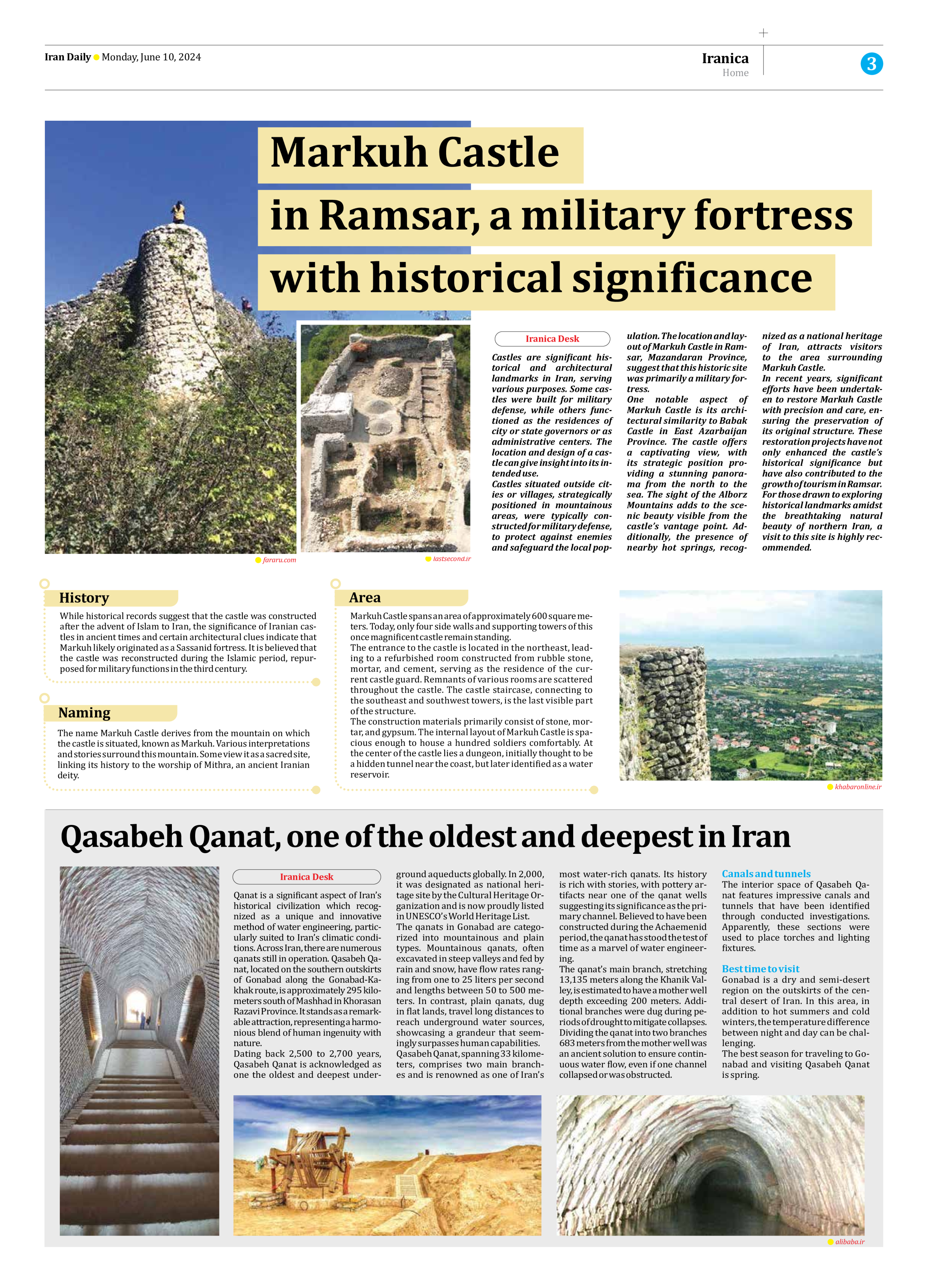
Markuh Castle in Ramsar, a military fortress with historical significance
Castles are significant historical and architectural landmarks in Iran, serving various purposes. Some castles were built for military defense, while others functioned as the residences of city or state governors or as administrative centers. The location and design of a castle can give insight into its intended use.
Castles situated outside cities or villages, strategically positioned in mountainous areas, were typically constructed for military defense, to protect against enemies and safeguard the local population. The location and layout of Markuh Castle in Ramsar, Mazandaran Province, suggest that this historic site was primarily a military fortress.
One notable aspect of Markuh Castle is its architectural similarity to Babak Castle in East Azarbaijan Province. The castle offers a captivating view, with its strategic position providing a stunning panorama from the north to the sea. The sight of the Alborz Mountains adds to the scenic beauty visible from the castle’s vantage point. Additionally, the presence of nearby hot springs, recognized as a national heritage of Iran, attracts visitors to the area surrounding Markuh Castle.
In recent years, significant efforts have been undertaken to restore Markuh Castle with precision and care, ensuring the preservation of its original structure. These restoration projects have not only enhanced the castle’s historical significance but have also contributed to the growth of tourism in Ramsar. For those drawn to exploring historical landmarks amidst the breathtaking natural beauty of northern Iran, a visit to this site is highly recommended.
History
While historical records suggest that the castle was constructed after the advent of Islam to Iran, the significance of Iranian castles in ancient times and certain architectural clues indicate that Markuh likely originated as a Sassanid fortress. It is believed that the castle was reconstructed during the Islamic period, repurposed for military functions in the third century.
Naming
The name Markuh Castle derives from the mountain on which the castle is situated, known as Markuh. Various interpretations and stories surround this mountain. Some view it as a sacred site, linking its history to the worship of Mithra, an ancient Iranian deity.
Area
Markuh Castle spans an area of approximately 600 square meters. Today, only four side walls and supporting towers of this once magnificent castle remain standing.
The entrance to the castle is located in the northeast, leading to a refurbished room constructed from rubble stone, mortar, and cement, serving as the residence of the current castle guard. Remnants of various rooms are scattered throughout the castle. The castle staircase, connecting to the southeast and southwest towers, is the last visible part of the structure.
The construction materials primarily consist of stone, mortar, and gypsum. The internal layout of Markuh Castle is spacious enough to house a hundred soldiers comfortably. At the center of the castle lies a dungeon, initially thought to be a hidden tunnel near the coast, but later identified as a water reservoir.







